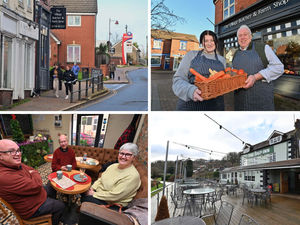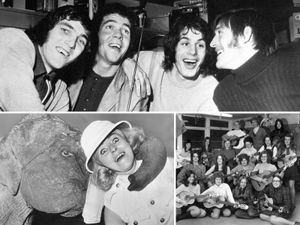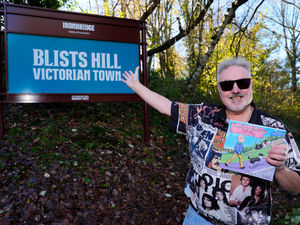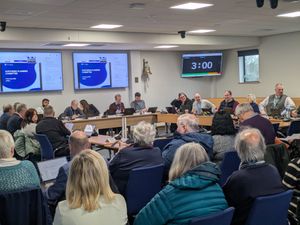Emperor and wife enjoyed visit to shops, table tennis and haircut in Shropshire town
Charles de Gaulle at Dudleston Heath? That's nothing – one Shropshire town got an African Emperor.
In the wake of a call for Ellesmere area to be honoured by the French president for its wartime role in sheltering the Free French leader Charles de Gaulle and his family, Patrick Wood of Church Stretton has highlighted the stay of another great historical leader in the county – Haile Selassie, the Lion of Judah.
"When Mussolini's forces invaded Ethiopia in 1936 the Emperor was exiled to England.
"Some of that time he was at Walcot Hall, Lydbury North, the one-time home of Clive of India," said Patrick.
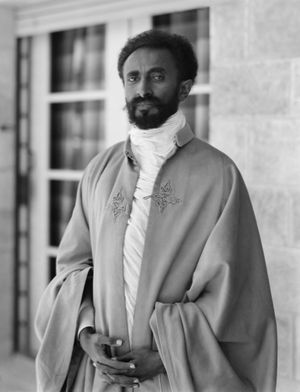
"My late father Charlie Wood used to tell me about when he arrived at Craven Arms railway station. His wife would be chauffeur-driven to shop in Craven Arms. She visited the family shop, J P Wood in Market Street.
"And I think my Uncle Basil – Charlie's brother – played table tennis with him, or he was in the same room when he was playing."
A dip into our files shows that Haile Selassie arrived at Craven Arms railway station on Tuesday, January 18, 1938, for a week-long stay at Walcot Hall, a few miles away.
As he is said to have come to the area at least three times, this would have been the first visit by the Emperor of Abyssinia, as he was known then.
A large crowd gathered outside the station to greet him and cheered as he left by Rolls-Royce for Walcot Hall, the home of Ronald and Noel Stevens, who were described as "well-known Midland hardware manufacturers."
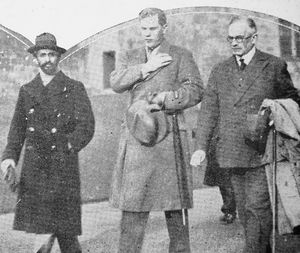
The Emperor, dressed in a suit, cloak, and Trilby hat, was accompanied by his daughter, Princess Tenange, and several attendants.
So what was the connection with the Stevens? Ronald Stevens was quoted by the Wellington Journal as saying "he had not met the Emperor whilst on his travels abroad, but he had been introduced to him through one of his personal friends."
Walcot was at that time a bird sanctuary, housing one of the largest collections of foreign water fowl in the world.
The Empress did not come, at least not on this occasion, as Selassie had bade farewell to her at Victoria station the previous day when she left with her six-year-old son for Jerusalem "to escape the rigours of the English winter."
During his Shropshire sojourn, Selassie got out and about, visiting Shrewsbury on Friday, January 21, to receive treatment from a local doctor for a broken collar bone suffered in a taxi accident in London on Christmas Eve. While in the county town he had a tour of Shrewsbury Castle, and admired the view from Laura's Tower.
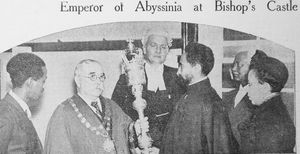
A Shrewsbury hairdresser, a Mr Sheffield whose barber's shop was at the old Victorian Market Hall, would recall in later life how he had cut the Emperor's hair, although perhaps this happened on a later visit as reports say that that first visit to Shrewsbury was brief, and that afterwards he popped in to see Major L.E. Bury at Millichope Park.
Then on the Sunday Lord and Lady Forester entertained him for tea at Willey Hall, Broseley, along with his entourage, and on the Monday there was a civic reception for the royal guest in Bishop's Castle. Some recently-discovered movie footage records this occasion.
Apart from his these wanderings, Haile Selassie visited Milebrook, near Knighton, several times during his exile in Britain.
Milebrook was family home of explorer Sir Wilfred Thesiger. This connection came because, during unrest in Ethiopia, Selassie took his infant son to the British legation in Addis Ababa and asked Wilfred Thesiger’s father, a British diplomat, to keep him safe, which he did.
Selassie, who had been living in Bath, was able to return to Addis Ababa in 1941 to reclaim his country, and ruled until 1974 when he was ousted from power in a coup.
He died in 1975, with official sources saying at the time he had died a natural death, but later evidence pointing to him having been strangled in his bed on the orders of the military government.

